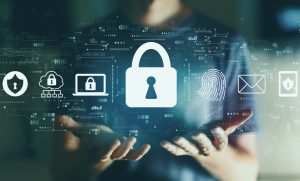Unveiling Internet Hazards: Safeguarding Users from Unseen Risks
In an era defined by digital connectivity, the internet offers an expansive landscape of knowledge, communication, and opportunity. However, amid its vast expanse lie concealed threats that often go unnoticed, posing significant risks to internet users across demographics. Exploring and understanding these covert dangers is vital for ensuring online safety, particularly for internet users, parents, educators, and individuals keen on safeguarding themselves in the digital sphere.
The Spectrum of Internet Hazards
The internet’s spectrum of risks encompasses overt dangers and more subtle, less visible threats. Evident perils like phishing scams, identity theft, and cyberbullying grab immediate attention due to their potential to cause immediate harm. In contrast, the subtler dangers, such as data tracking, psychological impacts from extended screen time, and the pervasive influence of misinformation, often fly under the radar, silently impacting users’ well-being.
Each of these threats carries its level of visibility and potential impact. For instance, while phishing might have a low visibility level, it possesses a high impact potential, leading to identity theft. On the other hand, data tracking might be highly visible and yet have a moderate impact on users’ privacy and security.
Targeted Audiences: Who’s at Risk?
The diverse user groups facing these risks have unique vulnerabilities. Children, with their innate curiosity, are prone to stumbling upon age-inappropriate content or falling victim to online predators. Adults, encompassing a broad spectrum of individuals, face multifaceted risks, from financial fraud to psychological impacts due to excessive screen time. Educators, dedicated to providing a safe and constructive digital learning environment, are tasked with safeguarding students against online threats while promoting healthy digital habits.
Securing Your Digital Footprint
To fortify one’s online presence, several proactive measures prove effective. Adjusting privacy settings across various online platforms, creating strong and unique passwords, and regularly updating software and security applications form the foundation of a robust defense against cyber threats. These simple yet powerful steps significantly reduce vulnerabilities to potential attacks and unauthorized access.

Unveiling Cyber Hygiene: Educating for Safety
Educating individuals about the less apparent perils of extended data tracking, the psychological impacts arising from prolonged screen time, and the detrimental influence of misinformation is crucial. Integrating cyber hygiene practices into daily routines becomes essential for users of all age groups.
At home, parents play a pivotal role in guiding their children’s online experiences. Open communication, imparting digital literacy, and equipping children with the ability to discern misinformation from reliable sources form the cornerstone of a safe digital environment.
Educators assume the responsibility of instilling digital citizenship among their students. Fostering a supportive space where students can discuss their online experiences openly while learning responsible online behavior is fundamental.
The Call for Collective Vigilance
While personal vigilance is critical, collective effort is paramount in combating these hidden perils. Creating awareness and advocating for safer digital spaces within communities, educational institutions, and online platforms fosters a culture of digital responsibility and security.
In conclusion, navigating the ever-evolving digital landscape demands continuous vigilance and education. Understanding the complete spectrum of internet hazards, from evident threats like phishing to the subtler dangers such as data tracking and psychological impacts, equips us with the tools and knowledge to traverse the digital realm safely. By collectively advocating for a secure cyber world, we can pave the way for a safer, more informed online community.












